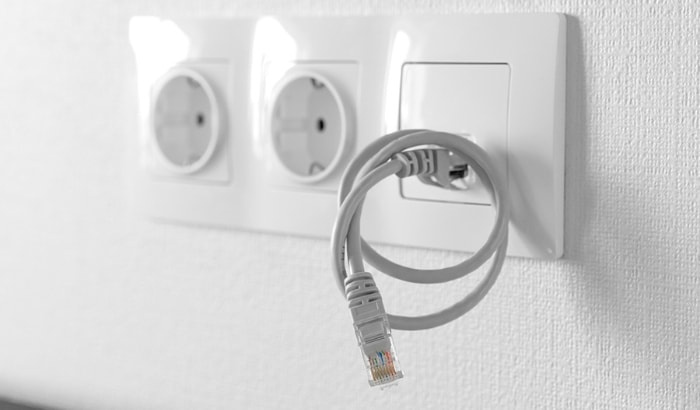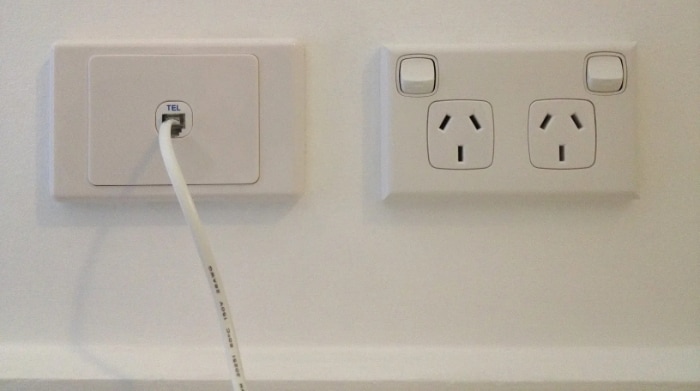Ethernet vs Phone Jack: What Sets Them Apart

While many of us take the humble jack for granted, this small interface plays a critical role in our connected lives. Whether you're setting up a home office or simply trying to get your new gadget online, the chances are high that you've encountered a couple of different jacks that look quite similar.
But looks can be deceiving; confusing an Ethernet jack with a phone jack can lead to a host of issues, from poor connectivity to complete network failure.
Shape and Physical Dimensions
Ethernet and phone jacks may appear quite similar to the untrained eye, yet subtle differences in their shape and dimensions make them uniquely suited for their respective functions. Recognizing these physical characteristics can save you from connectivity issues and network mishaps.
Ethernet Jack Shape and Dimensions
The Ethernet jack, commonly known as an RJ-45 connector, usually has a rectangular shape. It measures approximately 21.5 mm in length and 11.7 mm in width.
The design incorporates a locking clip on the top, ensuring that the cable stays securely connected. Its eight internal pins are aligned in a single row, and these are essential for the jack's networking capabilities. The Ethernet jack is slightly larger compared to a phone jack, and this difference in size is a key identifier.
Phone Jack Shape and Dimensions
In contrast, the traditional phone jack, often referred to as an RJ-11 connector, is also rectangular but is generally smaller than an Ethernet jack. It measures about 21 mm in length and 9.65 mm in width.
Similar to the Ethernet jack, it comes with a locking clip for secure attachment. However, it usually contains only two to four pins, depending on the model. These pins are also arranged in a single row but take up less space than their Ethernet counterparts.
Similarities in Shape and Dimensions
Despite these differences, it's easy to see why these two types of jacks are often confused. Both are rectangular and feature a locking clip on top.
Their lengths are almost the same, making quick identification a bit challenging.
Distinctive Features for Identification
Even though they share some similarities, there are key differences that can help you distinguish between the two. Ethernet jacks are slightly wider and come with eight pins, which is double the minimum number found in phone jacks.
The locking clip and overall size of Ethernet jacks are generally more robust to support the higher data rates and broader range of applications they are designed for.
Number and Arrangement of Pins
While the external appearance of Ethernet and phone jacks can be misleading, the number and arrangement of pins inside these jacks provide clear indicators of their functionality. Knowing the specifics of these pin configurations will not only help you differentiate between the two but also appreciate why each is uniquely suited for its intended use.
Ethernet Jack Pin Configuration
The Ethernet jack, specifically the RJ-45, features eight pins. These pins are arranged in a single horizontal row and are numbered from left to right when the jack is facing upward.
Each pin has a designated function, often relating to transmitting or receiving data. The standard configurations, known as T568A and T568B, dictate the color coding and pairing of these eight wires. These configurations are crucial for setting up a reliable network connection.
Phone Jack Pin Configuration
The phone jack, or RJ-11, has fewer pins than its Ethernet counterpart. Depending on the specific model and requirements, a phone jack may have just two or up to four pins.
Like the Ethernet jack, these pins are arranged in a single row but occupy less space due to the fewer number. In most residential setups, only the middle two pins are actively used for line one of telephone service, while the outer pins can be used for a second line.
Similarities in Pin Arrangement
Interestingly, both Ethernet and phone jacks feature pins in a single horizontal row. This commonality is one of the reasons they are often mistaken for each other.
In both cases, the jacks are designed to connect with matching ports that have corresponding pin arrangements, facilitating a secure and functional connection.
Unique Features for Easy Identification
To clearly identify each type, remember these key differences: Ethernet jacks come standard with eight pins, whereas phone jacks will have between two and four. The robustness and intricacy of Ethernet pins reflect its capability to handle high-speed data for networking applications.
On the other hand, the simplicity of the phone jack pins suits its primary role in voice communication.
Material and Build Quality

Though they may look similar, Ethernet and phone jacks are typically constructed from different materials to meet the requirements of their respective applications. Paying attention to these materials and the build quality can provide another layer of understanding, making it easier to distinguish between the two jacks.
Ethernet Jack Material and Build Quality
Ethernet jacks, specifically RJ-45 connectors, are usually built with high-quality materials to support the demands of network communications. The outer casing is often made of a robust plastic like polycarbonate, which provides both durability and insulation. Inside, the pins are generally made of copper, often with a gold or nickel plating to prevent corrosion and to ensure a reliable connection.
The build quality is engineered to withstand frequent plugging and unplugging, making it suitable for environments that require robust and reliable data transmission.
Phone Jack Material and Build Quality
In contrast, phone jacks—often RJ-11 connectors—are generally not made to the same high-quality standards as Ethernet jacks. The outer casing is also usually made from plastic but may not be as durable.
The pins inside a phone jack are commonly constructed from cheaper metals like tin or zinc, sometimes with a thin layer of higher-quality metal like gold for the sake of conductivity. Phone jacks are generally designed for less demanding environments and do not require the same level of material quality as Ethernet jacks.
Common Materials Across Both Jacks
Both types of jacks share some common materials, such as plastic for the outer casing and metal for the internal pins. This commonality can add another layer of confusion when attempting to differentiate the two, but upon closer inspection, the difference in quality becomes apparent.
Key Differentiators in Material and Build
The critical point of distinction lies in the quality and robustness of the materials used. Ethernet jacks typically employ high-grade materials to accommodate the higher frequencies and faster data rates they are designed for.
Phone jacks, on the other hand, often use less expensive materials, as their main function is limited to voice transmission, which doesn't require high-frequency handling.
Functional Differences
While their external features might lead to confusion, Ethernet and phone jacks have very different roles in network and communication setups. Exploring these functional differences sheds light on why their design elements are not merely cosmetic but purposefully tailored to their individual applications.
Ethernet Jack Functional Capabilities
Ethernet jacks, or RJ-45 connectors, are specifically engineered to handle high-speed data transmissions required for networking. These connectors are capable of supporting various forms of Ethernet, from 10BASE-T all the way up to 10GBASE-T, meaning they can handle speeds ranging from 10 Mbps to 10 Gbps.
Additionally, Ethernet jacks support a broader range of protocols and services beyond simple data transfer, including Voice over IP (VoIP) and Power over Ethernet (PoE), which allows for both data and electrical power to be carried over the cable.
Phone Jack Functional Capabilities
Phone jacks, commonly referred to as RJ-11 connectors, have a much more limited scope of functionality. They are primarily designed for analog voice communications over a telephone line.
While they can support some data transmissions, such as dial-up internet, their capabilities are far less advanced compared to Ethernet jacks. The limited number of pins usually restricts them to basic one or two-line telephone setups, and they don't have the built-in support for the various advanced networking protocols that Ethernet jacks do.
Common Functionalities Across Both
It's worth mentioning that both types of jacks serve as interfaces for point-to-point communication. Whether you're setting up a local area network (LAN) using Ethernet jacks or connecting a landline telephone using phone jacks, each serves as a crucial connection point.
This common function adds to the visual confusion but also highlights the importance of proper identification.
Distinctive Features Dictated by Function
The fundamental difference between the two lies in their capabilities and complexities. Ethernet jacks are versatile connectors capable of handling high-speed data and a variety of networking protocols.
Phone jacks, in contrast, are designed for simpler tasks like voice communication and have limitations on data speed and complexity.
Conclusion
Ethernet and phone jacks may appear similar, but they have distinct physical and functional characteristics. Ethernet jacks are designed for high-speed data transmission and are built with robust materials.
Phone jacks focus on voice communications and generally use less expensive materials. Recognizing these differences is vital for correct setup and optimal performance, helping you make the right connections without complications.


